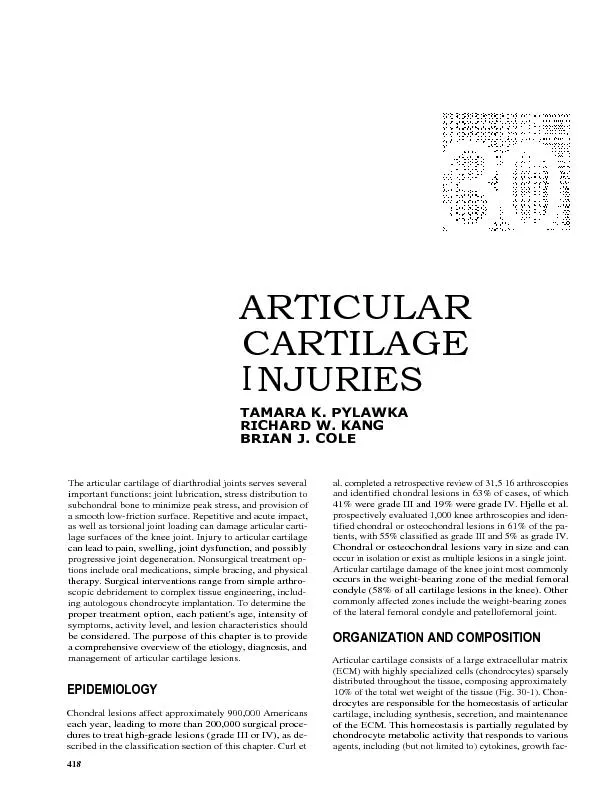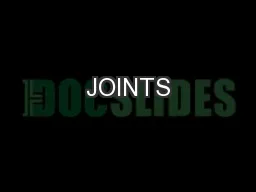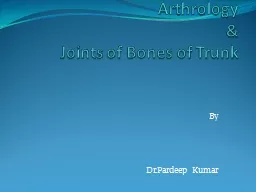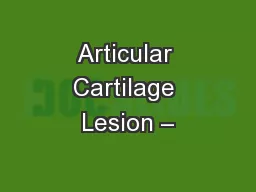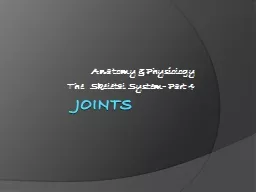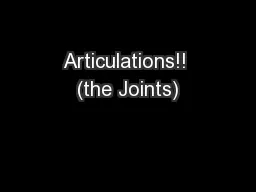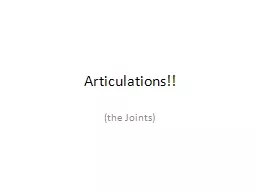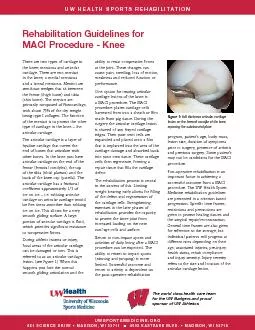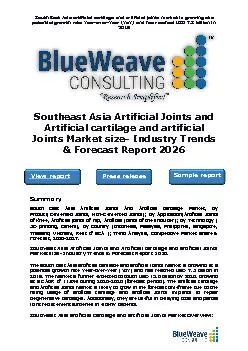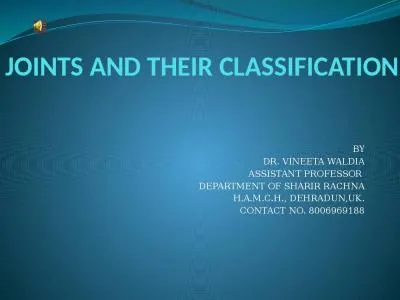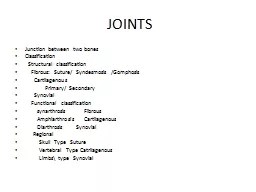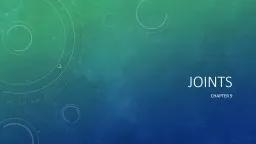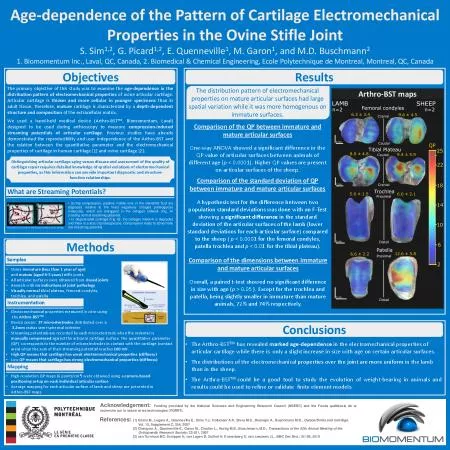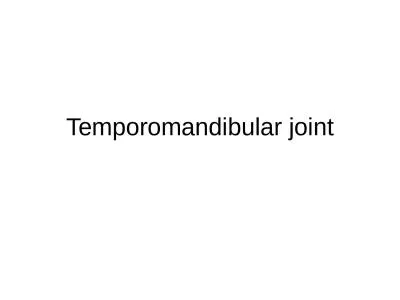PDF-The articular cartilage of diarthrodial joints serves severalimportant
Author : yoshiko-marsland | Published Date : 2016-10-09
Figure 304Photomicrograph of biopsy from fibrocartilage fillafter marrow stimulation technique demonstrating a distinct lack oforganizational structure and poor
Presentation Embed Code
Download Presentation
Download Presentation The PPT/PDF document "The articular cartilage of diarthrodial ..." is the property of its rightful owner. Permission is granted to download and print the materials on this website for personal, non-commercial use only, and to display it on your personal computer provided you do not modify the materials and that you retain all copyright notices contained in the materials. By downloading content from our website, you accept the terms of this agreement.
The articular cartilage of diarthrodial joints serves severalimportant: Transcript
Download Rules Of Document
"The articular cartilage of diarthrodial joints serves severalimportant"The content belongs to its owner. You may download and print it for personal use, without modification, and keep all copyright notices. By downloading, you agree to these terms.
Related Documents

